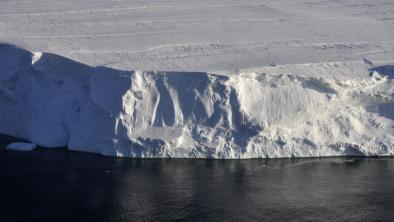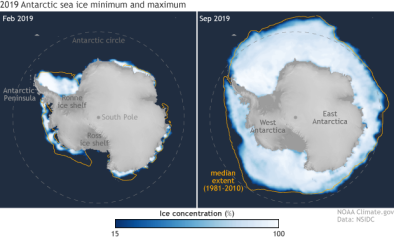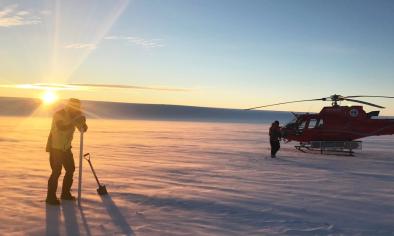Science Source
Antarctic ice shelf potentially stabilized by export of meltwater in surface river
- States that meltwater stored in ponds and crevasses can weaken and fracture ice shelves, triggering their rapid disintegration
- States that this ice-shelf collapse results in an increased flux of ice from adjacent glaciers and ice streams, thereby raising sea level globally
- States, however, that surface rivers forming on ice shelves could potentially export stored meltwater and prevent its destructive effect
- Presents evidence for persistent active drainage networks—interconnected streams, ponds and rivers—on the Nansen Ice Shelf in Antarctica that export a large fraction of the ice shelf’s meltwater into the ocean.
- Finds that active drainage has exported water off the ice surface through waterfalls and dolines for more than a century
- Finds that the surface river terminates in a 130-metre-wide waterfall that can export the entire annual surface melt over the course of seven days
- Finds that during warmer melt seasons, these drainage networks adapt to changing environmental conditions by remaining active for longer and exporting more water
- Finds that similar networks are present on the ice shelf in front of Petermann Glacier, Greenland, but other systems, such as on the Larsen C and Amery Ice Shelves, retain surface water at present
- States that the underlying reasons for export versus retention remain unclear
- Results suggest that, in a future warming climate, surface rivers could export melt off the large ice shelves surrounding Antarctica—contrary to present Antarctic ice-sheet models, which assume that meltwater is stored on the ice surface where it triggers ice-shelf disintegration
Related Content
Headline

Jan 29, 2020 | BBC News
Journey to the 'doomsday glacier'
Headline

Nov 22, 2019 | NOAA Climate.gov
Understanding climate: Antarctic sea ice extent
Headline

Mar 26, 2019 | The Guardian
Australian researchers find huge lakes beneath largest east Antarctic glacier
Science Source
| Geophysical Research Letters
Mass Loss of Totten and Moscow University Glaciers, East Antarctica, Using Regionally Optimized GRACE Mascons
Yara Mohajerani, Isabella Velicogna, Eric Rignot


